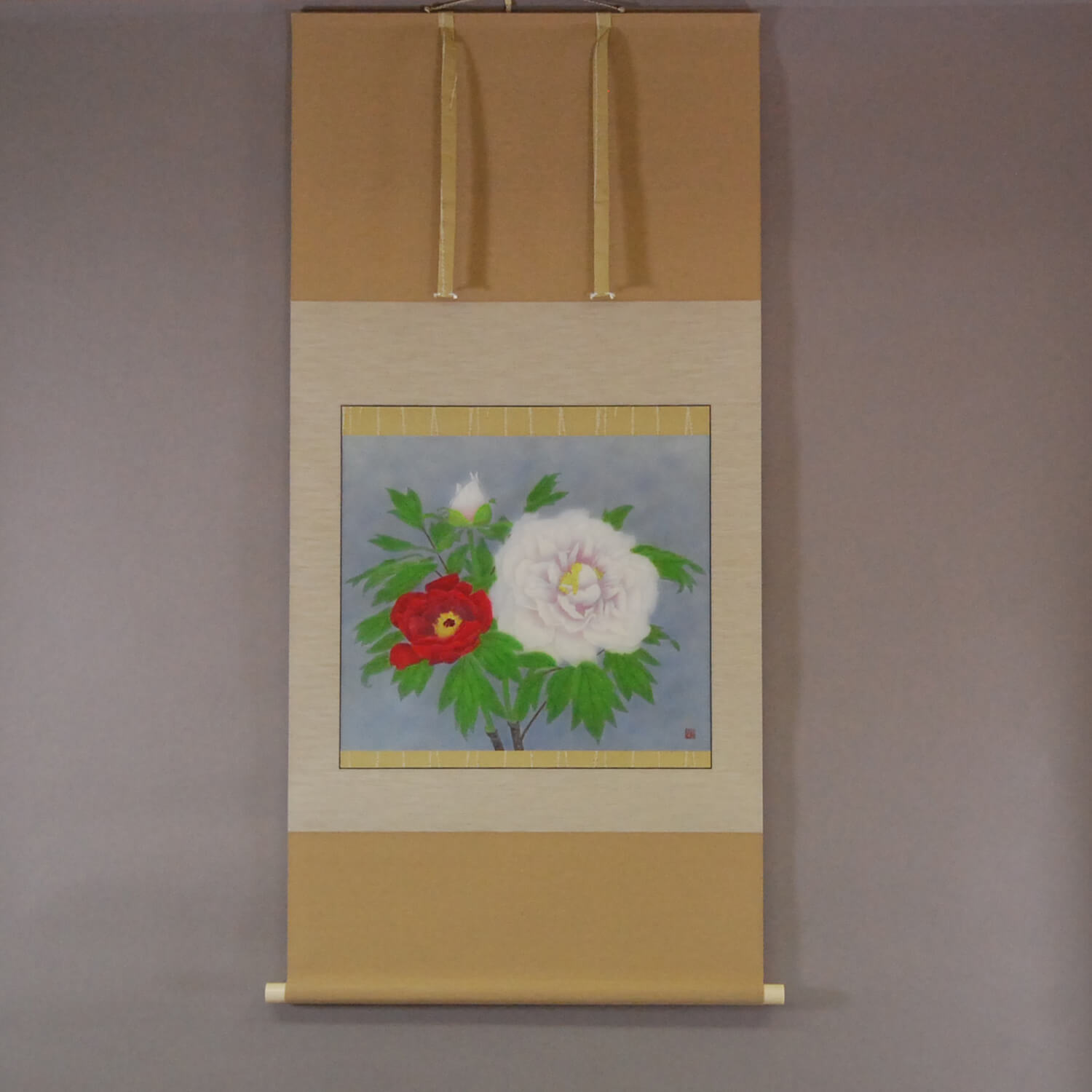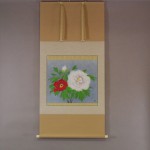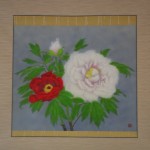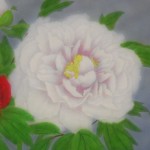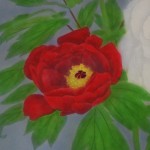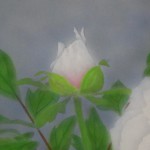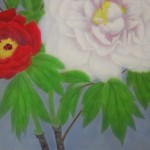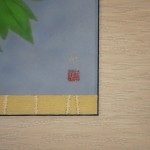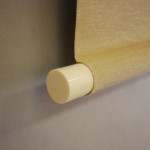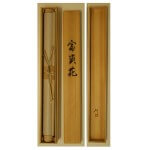Products Lineup
News / Blog
Other Menus
Peonies / Katō Tomo - Fuukibana
- Product ID
- 0081
- Name
- Katō Tomo
- Profile
Born: 1947. Member of the Nitten Exhibition. Disciple of both Kodama Kibō and Okuda Gensō.
- Size
- 724mm x 1440mm
- Roller End Material
- Artificial ivory
- Material of the Work
- Japanese paper
- Price
- JPY 400,000
- Stock Condition
- In stock
- Payment: Click the Paypal Mark
- Duty and Taxes
Import duty and taxes are beyond our control and may apply to your shipment. Please noted that these fees are the responsibility of the buyer.
- Description
A Japanese peony, considered the “king of flowers,” has a symbolic meaning that includes wealth, good fortune and honor. The peony originated in China. Around the eighth century, the Chinese introduced the peony to Japan. The peony is a favorite flower in gardens all over the world; its symbolic meaning serves as an inspiration for a variety of art forms.
In the “kakejiku” (hanging scroll) world, displaying a kakejiku with a peony painting is considered as the warmest hospitality. Therefore, this kakejiku is often displayed even in seasons other than early summer.
“Kōhaku” means a combination of red and white colors. Kōhaku is thought to be a good omen. Therefore, the national flag of Japan is a white rectangular flag with a large red circle (representing the sun) in the center.
This is a work of red and white peonies painted by Katō Tomo. He expresses the peony’s beauty and the happy atmosphere of kōhaku very well. The vivid colors of “iwa-enogu” (mineral pigments) are ideal for expressing them. This is a masterwork, one we feel refreshed upon viewing.

